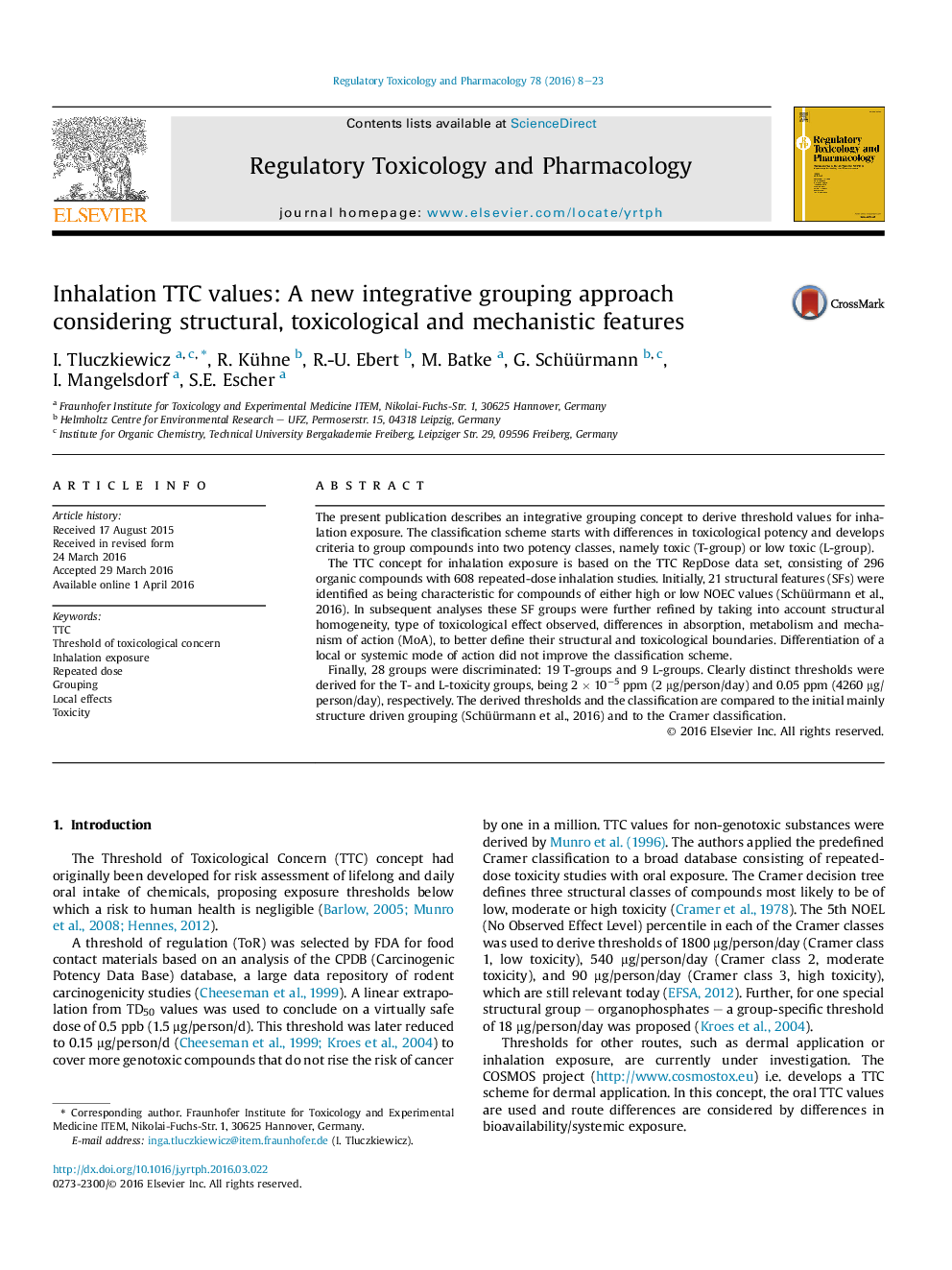| Article ID | Journal | Published Year | Pages | File Type |
|---|---|---|---|---|
| 2592294 | Regulatory Toxicology and Pharmacology | 2016 | 16 Pages |
•A new integrative grouping concept to derive threshold values for inhalation exposure.•Groups of chemicals with specific structural features were identified as characteristic of either high or low toxicity.•Analyses of chemical groups regarding structure, toxicological effects, differences in absorption, metabolism or MoA.•Comparison of the new concept with the Cramer classification.
The present publication describes an integrative grouping concept to derive threshold values for inhalation exposure. The classification scheme starts with differences in toxicological potency and develops criteria to group compounds into two potency classes, namely toxic (T-group) or low toxic (L-group).The TTC concept for inhalation exposure is based on the TTC RepDose data set, consisting of 296 organic compounds with 608 repeated-dose inhalation studies. Initially, 21 structural features (SFs) were identified as being characteristic for compounds of either high or low NOEC values (Schüürmann et al., 2016). In subsequent analyses these SF groups were further refined by taking into account structural homogeneity, type of toxicological effect observed, differences in absorption, metabolism and mechanism of action (MoA), to better define their structural and toxicological boundaries. Differentiation of a local or systemic mode of action did not improve the classification scheme.Finally, 28 groups were discriminated: 19 T-groups and 9 L-groups. Clearly distinct thresholds were derived for the T- and L-toxicity groups, being 2 × 10−5 ppm (2 μg/person/day) and 0.05 ppm (4260 μg/person/day), respectively. The derived thresholds and the classification are compared to the initial mainly structure driven grouping (Schüürmann et al., 2016) and to the Cramer classification.
